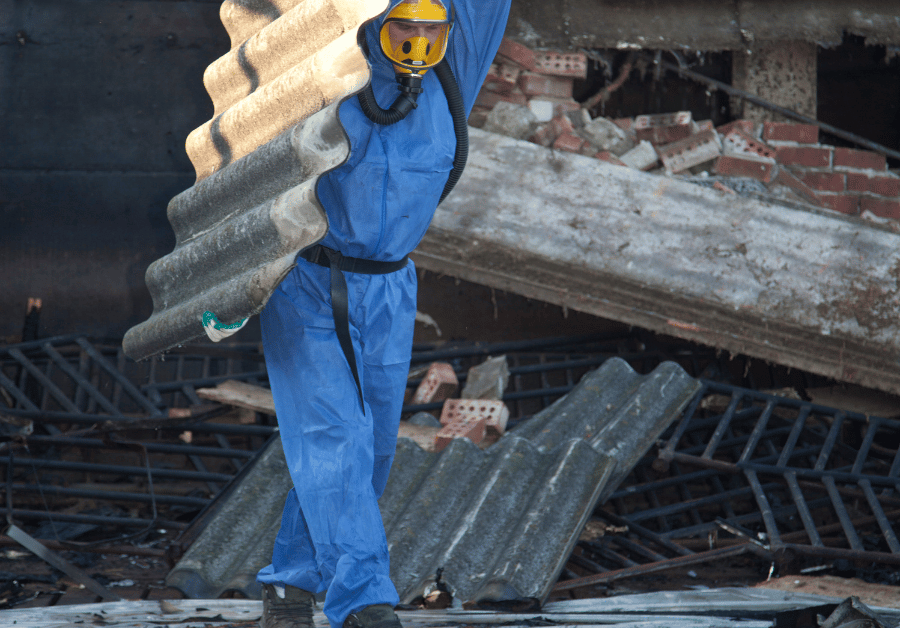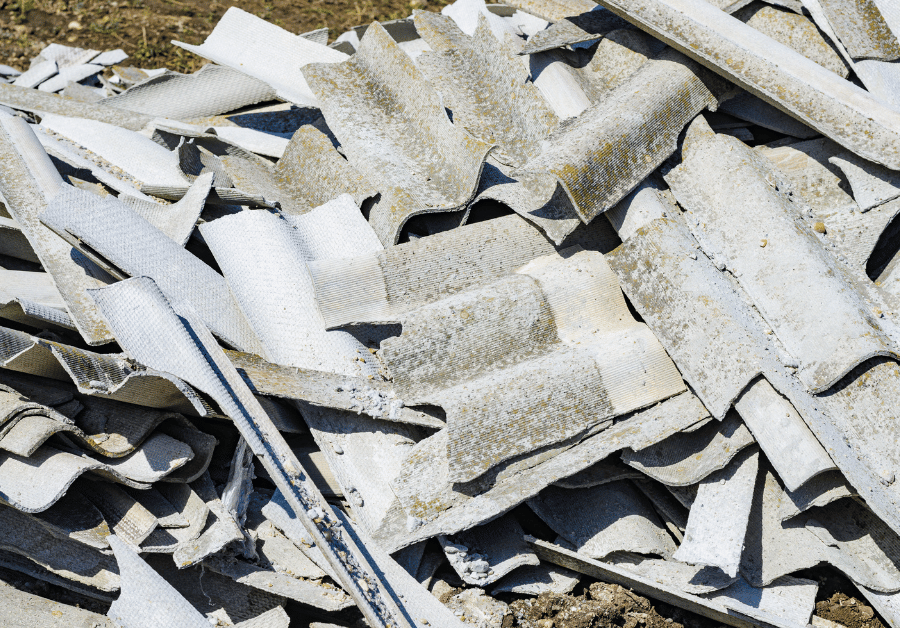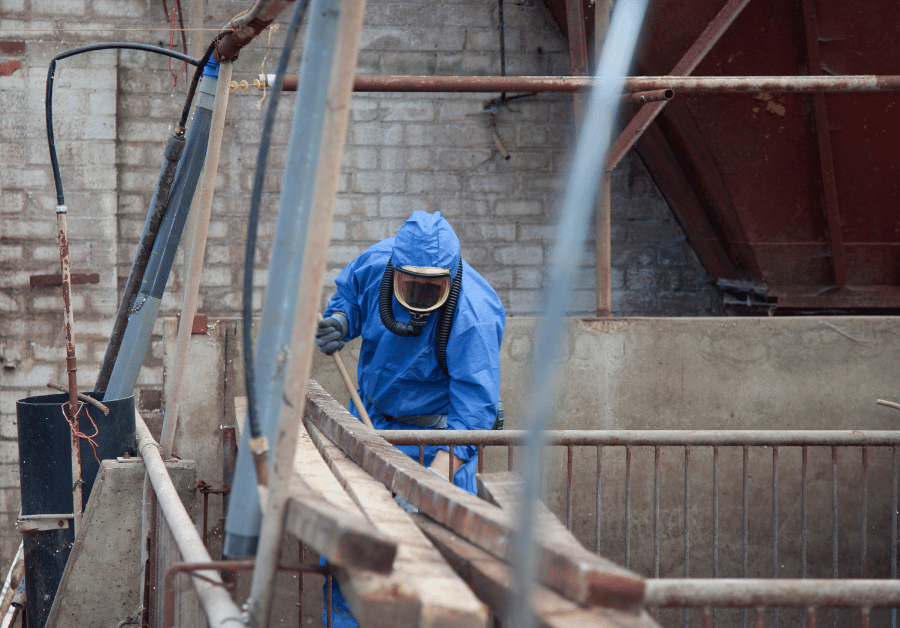The Hidden Danger: Why Asbestos Removal is Crucial for Australian Homes & Businesses
Asbestos. The word itself can send a shiver down your spine, and for good reason. Once a widely used building material across Australia, it's now a known carcinogen responsible for serious health conditions. If you own an older property in Sydney, Melbourne, Perth, Brisbane, Adelaide, or Hobart, there's a significant chance asbestos materials are present. But don't panic – understanding the risks and knowing when to call for professional asbestos removal is the first crucial step.
This comprehensive guide will walk you through everything you need to know about removing asbestos safely and legally in Australia. From identifying potential asbestos hotspots to choosing the right licensed asbestos removalist, we'll ensure you have the knowledge to protect your property and, more importantly, your health. We'll dive deep into asbestos services, explore why DIY is never an option, and connect you with trusted professionals.
What is Asbestos and Why is it So Dangerous?

Asbestos is a naturally occurring fibrous mineral that was extensively used in construction from the 1940s to the late 1980s due to its durability, fire resistance, and insulating properties. It can be found in over 3,000 different products, making its presence widespread in many older Australian buildings.
A Brief History of Asbestos in Australia
Australia was one of the highest per capita users of asbestos in the world. Its use was completely banned nationwide by the end of 2003. This means any building constructed or renovated before this date could potentially contain asbestos materials. Understanding this history highlights why asbestos inspection and awareness are so vital today.
The Health Risks: Why "Safe Asbestos" Doesn't Exist
The danger of asbestos lies in its microscopic fibres. When disturbed, these fibres become airborne and can be inhaled deep into the lungs. Over time, this exposure can lead to severe and often fatal diseases, including:
- Mesothelioma: A rare and aggressive cancer affecting the lining of the lungs, abdomen, or heart.
- Asbestosis: A chronic lung disease causing scarring of the lung tissue, leading to shortness of breath.
- Asbestos-related lung cancer: A form of lung cancer directly linked to asbestos exposure.
- Pleural plaques: Thickening of the lung lining, which can be a marker of asbestos exposure.
It's critical to understand that there is no safe level of asbestos exposure. Even brief contact with friable asbestos (material that can be easily crumbled into powder, releasing fibres) can be hazardous. This is why professional asbestos removal work is non-negotiable when dealing with this material.
Is Asbestos Hiding in Your Property? Common Locations and How to Find Asbestos
Given its widespread use, asbestos can be found in surprising places within residential and commercial properties. Knowing where to look is the first step, but remember, only a qualified professional should confirm its presence and recommend asbestos solutions.
Where to Look: Residential Asbestos Hotspots
For homeowners in Sydney, Melbourne, Perth, Brisbane, Adelaide, and Hobart, common areas where asbestos might be lurking include:
- Roofing: Asbestos cement sheeting (fibro) was popular for roofs.
- Walls and Ceilings: Flat or corrugated sheeting, often found in wet areas like bathrooms and laundries, or as internal/external cladding.
- Flooring: Vinyl floor tiles, backing to linoleum, and underlay.
- Pipes: Asbestos cement pipes for stormwater, drainage, and even insulation around hot water pipes.
- Fencing: Asbestos cement fences were common.
- Sheds and Garages: Often constructed entirely from asbestos cement sheets.
- Textured Coatings: "Popcorn" ceilings or sprayed-on wall textures.
- Electrical Meter Boards: Backing panels.
Commercial Asbestos Concerns
For commercial properties and workplaces, the list expands. Beyond the residential examples, asbestos can be found in:
- Insulation in plant rooms, boilers, and pipework.
- Fire doors and fire-rated materials.
- Gaskets and seals in machinery.
- Switchboards and electrical components.
- Roofing and wall cladding in industrial buildings.
If you suspect asbestos, or are planning renovations or demolition adelaide (or anywhere in Australia), a professional asbestos survey or asbestos inspection is absolutely essential. This involves asbestos testing of suspected materials to confirm presence and type.
The Non-Negotiable Need for Professional Asbestos Removal
Let's be unequivocally clear: Do not attempt to remove asbestos yourself. The risks are too high, not just for you but for anyone else who might be exposed to the released fibres. Safe asbestos removal is a highly specialised process governed by strict regulations.
Understanding Licensed Asbestos Removalists and Regulations
In Australia, asbestos removal work must be carried out by a licensed asbestos removalist. There are two classes of licences:
- Class A Licence: Required for the removal of any amount of friable asbestos (e.g., sprayed coatings, pipe lagging, insulation). This is the most dangerous type of asbestos to handle.
- Class B Licence: Required for the removal of more than 10 square meters of non-friable asbestos (e.g., asbestos cement sheeting).
These licences ensure the removalist has the necessary training, equipment, and protocols to manage the risks. Regulatory bodies like SafeWork SA (and their equivalents in other states like NSW, VIC, QLD, WA, TAS) oversee compliance with the national Code of Practice for the safe management and removal of asbestos. They ensure that asbestos handling procedures are followed to the letter, protecting both workers and the public.
The Asbestos Removal Process: What to Expect
A professional asbestos removal company follows a stringent process to ensure safety and compliance:
- Asbestos Inspection & Testing: An asbestos assessor will conduct an initial inspection and take samples for laboratory asbestos testing to confirm the presence and type of asbestos. This forms the basis of the asbestos register for commercial properties.
- Risk Assessment & Work Plan: A detailed plan is developed, outlining the scope of work, safety measures, and emergency procedures.
- Containment: The work area is sealed off with plastic sheeting and negative air pressure units to prevent fibre release into other areas. This is crucial for friable asbestos removal.
- Removal: Using specialised equipment and personal protective equipment (PPE), the asbestos removalist carefully removes the asbestos materials.
- Air Monitoring: Throughout the process, independent air monitoring may be conducted to ensure fibre levels remain safe.
- Decontamination: Workers and equipment are thoroughly decontaminated before leaving the containment area.
- Asbestos Disposal: All asbestos waste is double-bagged, sealed, labelled, and transported to a licensed landfill facility for safe asbestos disposal, adhering to strict legal requirements.
- Clearance Inspection & Certificate: An independent asbestos assessor conducts a final visual inspection and clearance air monitoring. Once satisfied the area is safe, a clearance certificate is issued, confirming the successful and safe removal.
This meticulous process ensures that your property is truly free of dangerous asbestos fibres, providing peace of mind for your home or workplace.
Choosing the Right Asbestos Removal Company: A Guide for Sydney, Melbourne, Perth, Brisbane, Adelaide, and Hobart

Selecting the right team for your asbestos removal project is paramount. Whether you're in a bustling city like Sydney or Melbourne, or a regional hub like Adelaide or Hobart, the principles remain the same.
Key Qualities of a Top Asbestos Removalist
When looking for a professional asbestos removal service, consider these factors:
- Licensing & Accreditation: Always verify their Class A or Class B licence (depending on the asbestos type) with the relevant state authority (e.g., SafeWork NSW, WorkSafe Victoria). A licensed asbestos assessor should also be involved.
- Experience: Look for companies with significant years of experience in both residential asbestos removal and commercial asbestos removal. Experience often means they've encountered diverse scenarios and can handle complex jobs. Phrases like "Total Asbestos Services" or "MPA Asbestos" often signify established players.
- Insurance: Ensure they have comprehensive public liability and professional indemnity insurance.
- Safety Record: Inquire about their safety procedures and track record. A reputable company will prioritise the safety of their team and your property.
- Clear Communication: They should provide a detailed, easy-to-understand quote and explain the entire process clearly, including the asbestos management plan.
- References & Reviews: Check online reviews and ask for references. Companies like "The Demolition Blokes" or "Clean Air Asbestos Solutions" often have public testimonials.
- Transparency: A good company will be transparent about costs, timelines, and potential challenges. They should offer a free quote upfront.
Why Getting Multiple Quotes is Smart: Powered by Get 3 Quote
Finding the perfect asbestos removal company can feel overwhelming. You want a team that offers a competitive price, delivers a great service, and ensures the highest level of safety. This is where a platform like Get 3 Quote becomes invaluable.
Instead of spending hours searching for "asbestos removal Adelaide" or "pro asbestos removal Sydney" and calling individual companies, Get 3 Quote streamlines the process. Here's how it works:
- Tell Us What You Need: Fill out a simple form describing your asbestos removal requirements – whether it's for your home, a commercial property, asbestos testing, or a full demolition service.
- Get Quotes from Professionals: We connect you with up to 3 verified, licensed asbestos removalists in your area, be it Perth, Brisbane, or regional South Australia. You'll receive detailed, no-obligation quotes.
- Choose the Best Match: Compare the quotes, review profiles, and read feedback from other customers. This empowers you to select the professional asbestos team that best fits your needs and budget, ensuring you get a safe asbestos solution at a fair price. We highly recommend this approach for peace of mind.
This process saves you time and effort, ensuring you connect with reputable experts for your critical asbestos removal work.
Beyond Removal: Asbestos Disposal and Site Clearance
The job isn't finished once the asbestos is removed. Proper asbestos disposal is a critical final step, ensuring the hazardous material is contained and managed responsibly.
Safe Asbestos Waste Disposal
All asbestos waste, including contaminated soil, must be securely packaged and transported to a licensed waste disposal facility. These facilities are specially equipped to handle and bury asbestos waste in a way that prevents fibre release into the environment. Your chosen asbestos removalist will manage this entire process, providing documentation of safe disposal.
The Importance of a Clearance Certificate
After the physical removal and clean-up, an independent asbestos assessor will conduct a final inspection. This includes a thorough visual check and often air monitoring to confirm that the area is free from asbestos fibres. Once satisfied, a clearance certificate is issued. This certificate is your assurance that the area is safe for re-occupancy or subsequent renovation work. For commercial properties, this certificate is a vital part of your asbestos management plan and asbestos register compliance.
Secure Your Property, Protect Your Health with Expert Asbestos Removal
Dealing with asbestos is a serious matter, but it doesn't have to be a daunting one. By understanding the risks, respecting the regulations, and trusting in the expertise of licensed asbestos removalists, you can ensure your property is safe and compliant. Whether you're in the heart of Sydney, the suburbs of Melbourne, the coastal areas of Perth, the vibrant city of Brisbane, the historic streets of Adelaide, or the charming capital of Hobart, professional help is available.
Don't leave your health or the safety of your property to chance. Take the proactive step towards a safer environment today. Ready to take the next step? Get your free quote for asbestos removal services today! Visit https://get3quote.com.au to connect with licensed asbestos removalists in Sydney, Melbourne, Perth, Brisbane, Adelaide, Hobart, and across Australia. Your safe home and workplace are just a few clicks away. Get 3 Quote – making it easy to find reliable professionals for any job, big or small, ensuring your asbestos solutions are handled with the utmost care and professionalism.
